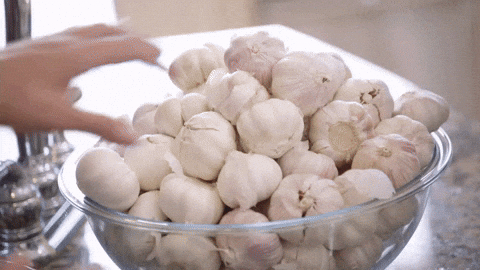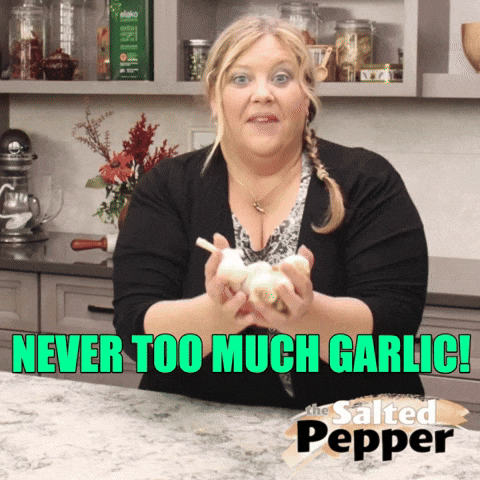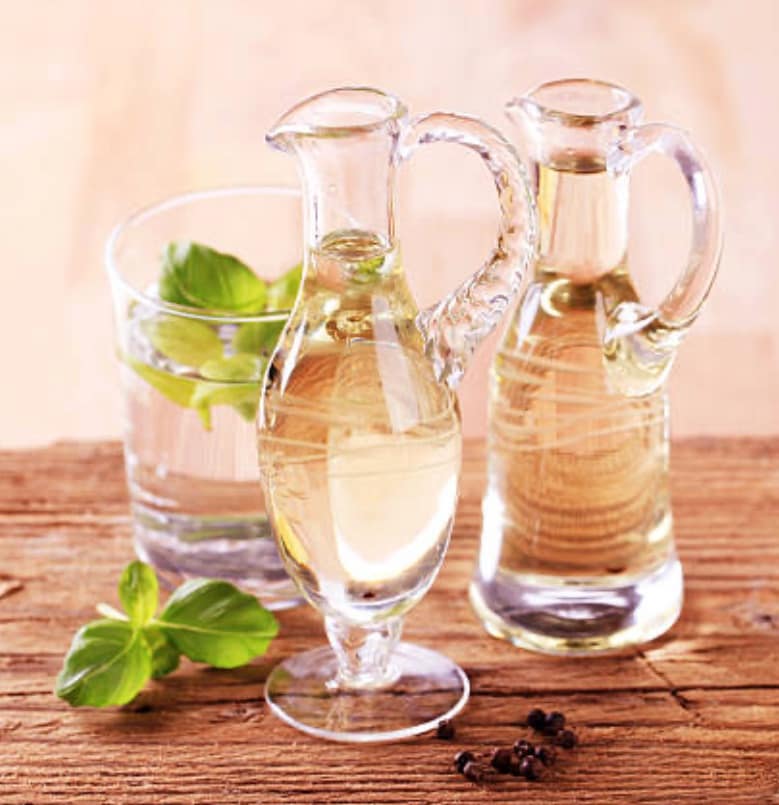Let’s get one thing straight: garlic isn’t just an ingredient. Garlic is an experience. It’s a smell that sticks to your hands for days, a flavor that punches like an angry Italian grandmother, and a centuries-old cure-all that’s somehow survived both the Black Plague and the clean eating movement.
So today, we’re diving into the stinky, spicy, and surprisingly historical world of garlic — because if we’re going to make our kitchens smell like vampire repellent, we might as well know why.

🧄 Origins: From Ancient Medicine Cabinet to Pasta Sauce
Garlic (Allium sativum) has been around longer than your favorite reality TV franchise. We’re talking over 5,000 years of culinary and medicinal drama. It’s believed to have originated in Central Asia, probably somewhere around modern-day Kyrgyzstan or Turkmenistan, before spreading its way through ancient civilizations like a clingy houseguest who never leaves.
The Egyptians were obsessed with it. They fed garlic to slaves building the pyramids, believing it gave them strength and endurance (ancient pre-workout, anyone?). The Greeks and Romans picked up the habit, giving garlic to soldiers before battle, because apparently, the smell of victory was “aggressively allium.”
Even traditional Chinese and Indian medicine used garlic for its supposed ability to treat infections, digestive issues, and “evil spirits”. Which, frankly, feels like the same problem described three different ways.

🍝 Culinary Glow-Up: The Great Garlic Renaissance
Fast forward a few thousand years, and garlic has graduated from ancient medicine to global flavor icon.
It’s in your Italian marinara, your Korean kimchi, your Indian curries, and your favorite garlic aioli that you insist isn’t just fancy mayo (but it is).
Garlic’s magic trick is that it shapeshifts depending on how you cook it:
- Raw garlic: sharp, spicy, and not recommended before a first date.
- Roasted garlic: caramelized, sweet, and spreadable enough to make bread an emotional experience.
- Sautéed garlic: mellow, buttery, and the foundation of 90% of comfort food recipes.
Basically, garlic is the Taylor Swift of the vegetable world: versatile, universally loved, and capable of overpowering everyone else in the room.

🌿 Pros: The Good, the Smelly, and the Scientifically Legit
Aside from making food taste 400% better, garlic has a solid list of science-backed perks:
- Antibacterial & antifungal powers: Garlic’s active compound, allicin, is basically nature’s antibiotic.
- Heart health: Studies suggest it can help reduce cholesterol and blood pressure.
- Antioxidant queen: Helps combat cell damage and inflammation.
- Cold fighter: It may (emphasis on may) help boost your immune system…Though that’s probably just because people stay six feet away when they smell your breath.
Garlic is also one of those ingredients that makes healthy food taste indulgent, which is arguably its most noble contribution to society

😬 Cons: The Downside of Being So Damn Powerful
Garlic’s not perfect. She’s a diva, and she demands respect.
- The breath: Garlic breath doesn’t just linger, it haunts. You can brush, chew gum, gargle holy water, and still smell like a trattoria at midnight.
- Digestive drama: Some people can’t tolerate garlic because it’s high in FODMAPs, meaning it can cause bloating or stomach upset.
- Allergies: Rare, but they happen. If garlic makes your mouth burn or your skin itch, that’s your cue to break up.
- Overuse: A little garlic = good. A lot of garlic = culinary sabotage. There’s a fine line between “rich flavor” and “my tongue is crying for help.”

🧄 Everyday Uses: Because Garlic Is Always the Main Character
- Cooking: From pasta sauces to soups to stir-fries — if it’s savory, garlic belongs in it.
- Roasted garlic spread: Roast whole bulbs until soft and mash onto bread for the best “I don’t need dinner, this is dinner” experience.
- Infused oils: Great for salad dressings or drizzling on veggies. Just refrigerate them, because botulism is not a cute flavor profile.
- Health supplements: Garlic pills exist, but if you’re not suffering through the smell, are you even committed?

💬 Final Thoughts: In Garlic We Trust
Garlic has survived millennia of fads, from “butter is evil” to “kale smoothies cure everything.” And through it all, it’s remained a kitchen essential because (let’s be honest) garlic is flavor, comfort, and chaos all rolled into one papery bulb.
So the next time you’re sautéing dinner and your house smells like an Italian grandmother’s kitchen, take a deep breath (through your mouth). You’re participating in a culinary tradition older than civilization itself.
Garlic doesn’t just make food taste good. Garlic is the reason food tastes good.
Further Reading:
Agarwal, K. C. (1996). Therapeutic actions of garlic constituents. Medicinal Research Reviews, 16(1), 111–124.
Ankri, S. & Mirelman, D. (1999). Antimicrobial properties of allicin from garlic. Microbes and Infection, 1(2), 125-129.
Ansary, J., Forbes-Hernandez, T.Y., Gil, E., et al. (2020). Potential health benefit of garlic based on human intervention studies: A brief 0verview. Basel, 9(7), 619.
Gebreyohannes, G., & Mebrahtu, T. (2017). Medicinal values of garlic: A review. International Journal of Medicine and Medical Sciences, 5(9), 401–408.
Harris, J. C., Cottrell, S. L., Plummer, S., & Lloyd, D. (2001). Antimicrobial properties of Allium sativum (garlic). Applied Microbiology and Biotechnology, 57(3), 282–286.
Integrated Pest Management. (2015, September). Garlic: A brief history. University of Missouri.
Rahman, M. S. (2007). Allicin and other functional active components in garlic: Health benefits and bioavailability. International Journal of Food Properties, 10(2), 245–268.
Ried, K., Frank, O. R., Stocks, N. P., Fakler, P., & Sullivan, T. (2008). Effect of garlic on blood pressure: A systematic review and meta-analysis. BMC Cardiovascular Disorders, 8(13).
Thomson, M., & Ali, M. (2003). Garlic [Allium sativum]: A review of its potential use as an anti-cancer agent. Current Cancer Drug Targets, 3(1), 67–81.











